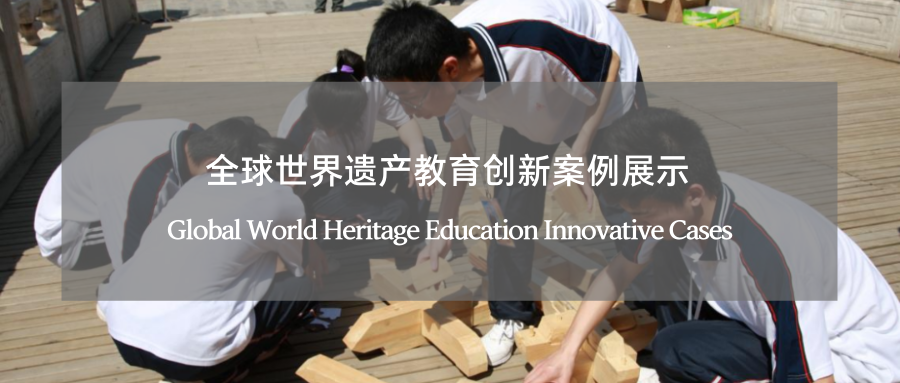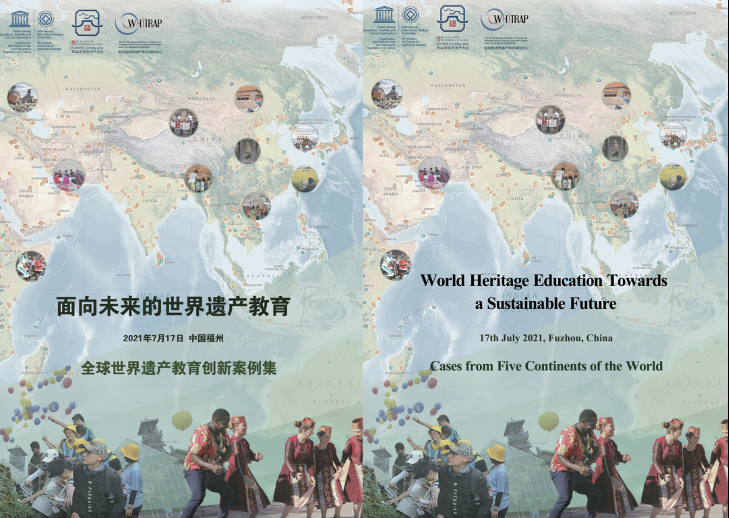| Outstanding Cases VOL.2 | Terracotta Army (Sino-US) and Youth WHE Program (China) |
| PublishDate:2021-10-19 Hits:3134 |
|
I Background World Heritage Education (WHE) is not only one of the most important ways to connect people to world heritages, but also a key to a creative solution for sustainable development of the heritage sites. With the accelerated development of the Internet technology in recent years, more and more innovators have accessed the heritage education field. They have not only promoted the regeneration of the contents and methods of heritage education, but also make it possible for heritage education to break existing boundaries and modes.
To correspond to and promote this reform, WHITRAP initiated this Global Innovation Cases of World Heritage Education in the hope to have a fine collection of forward-looking exemplar heritage education cases. The aim is to promote the sharing of relevant international experience and future cooperation, and contribute to the comprehensive and sustainable development of heritage sites. Cases were expected to be characterized essentially by global demonstrativeness which was further supported by four professional criteria of innovation, technology, cooperation and sustainability.
After a month-long application, candidate cases entered the selection stage and were officially presented at the 44th Session of the World Heritage Committee. This initiative received enthusiastic responses from all parties, and WHC’s official website also published WHITRAP’s global call for case studies on World Heritage Education. This initiative has received warm responses from all parties. Nearly 100 WHE innovation cases were collected from five continents of the world within a month, highlighting the emerging trends in various innovation fields and providing an important reference to explore the topic in the future. With reference to future development and model innovation as a global model, five qualities of future-oriented WHE are summarized as follows:
1) Enhancing social inclusiveness and cohesion via heritage education especially for the youth based on heritage protection;
2) Promoting multi-disciplinary integration through cross-boundary innovations and exploring a new model of multi-party cooperation through internal and external combination;
3) Exploring new heritage education concepts and methods according to local conditions via creativity and technology;
4) Rationalizing the use of Internet and digital technology to involve more people online and offline in heritage education;
5) Discovering heritage values and using education as an empowering tool to promote the creative innovative and sustainable development of heritage sites.
Based on the five qualities, the collection of 10 outstanding cases will present their innovation and exemplary significance. Those cases demonstrate a wide range of possibilities of the future WHE from the perspectives of life-time education, digitalization, cyber technology, cultural tourism development, world peace, social integration and philosophy, representing the emerging trends in various innovation fields. The thought-provoking cases provide a guideline for us to explore possible actions for the future WHE development.
In the series of the presentation of outstanding cases, we will focus on the educational activities for world heritage sites or specific heritage values, presenting their practical effects and valuable lessons over the past five years. In the last issue, from the two cases from France and Iran, we have learned their experience of “enhancing social inclusiveness and cohesion via heritage education especially for the youth based on heritage protection”. This issue will involve two cases: “Smithsonian Education Project for Digital Access to China’s Terracotta Army” (Sino-US) and “National Youth World Heritage Education Program” (China). Let’s discover their innovative features in “promoting multi-disciplinary integration through cross-boundary innovations and exploring a new model of multi-party cooperation through internal and external combination”.
II. Presentation of Outstanding Cases VOL.2
1. Smithsonian Education Project for Digital Access to China’s Terracotta Army” (Sino-US)
1) Introduction
Created collaboratively between the Smithsonian Center for Learning and Digital Access, Xidian University and the Emperor Qin Shihuang’s Mausoleum Site Museum, “Smithsonian education project for digital access to China’s terracotta army” was officially announced In November 2017. This online education project focused on the Chinese Qin culture and digital resources of the Emperor Qin Shihuang’s Mausoleum Site Museum. Making full use of the Smithsonian digital education platform. It is completely in accord with the curriculum standards of many primary and secondary schools in the United States and the thinking training methods of Harvard School of education. Currently, American teachers and students in their K-12 education period and any learners entering the Smithsonian digital education platform benefit from the profound.
Six modules of art education and social education for American primary and secondary school students have been phased promoted on the official website of Smithsonian learning and digital access center. At present, it went on to reach 70 thousand visits covering most cities in the United States. As an innovative achievement in the overseas dissemination of Chinese museum online education, the project paper was adopted by the 25th Congress of the International Association of Museums. On May 13, 2019, the Smithsonian Learning Lab of the SCLDA was named the best educational website at the 23rd annual Webby Awards. Besides, this project won “the best visual effect case” in the second overseas communication excellence awards.
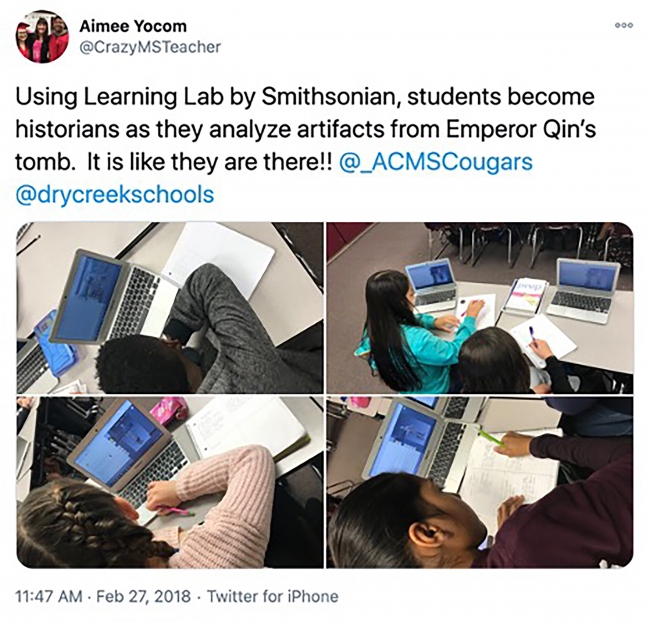 American students using Smithsonian digital education platform
2) Innovation
“Smithsonian education project for digital access to China’s terracotta army” is the first cooperation between Chinese and American museums in the field of web-based educational resources. Considering different needs and characteristics of local American learners, the project not only went deep into the connotation of cultural relics and the stories behind them but also provides professional online learning resources. The education idea and form which is not limited by time and space could be viewed as a kind of pioneering exploration and experiment to get heritage culture into the American primary and secondary school classroom. In addition, this project brings benefits at both professionalism and accuracy in the overseas communication of Chinese history and culture, and also creates a new vision and new thought of communication. The project follows the purpose of constructing a community with a shared future for mankind and the principle of mutual learning among civilizations. It integrates the contents and forms of “what to talk about, why to talk about, who to talk about and how to talk about” in heritage education which is original, exploratory and ingenious, and has affinity, infection and inspiration.
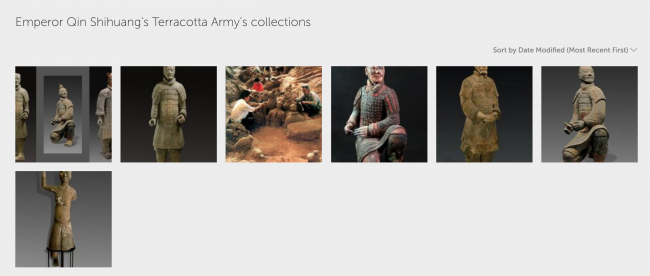 Qin Terracotta Warriors and Horses Smithsonian Online Digital Education Module
3) Collaboration
The cooperation between Chinese and American museums and schools is one of the effective means of operating this project, which can not only realize the construction and sharing of human cultural and educational resources, but also provide a solid foundation for further improving their influence and competitiveness in international cultural exchanges and education.
The Emperor Qin Shihuang’s Mausoleum Site Museum is a large-scale historical site museum. In December 1987, the Emperor Qinshihuang’s Mausoleum (including the terracotta warriors and horses) was added to the UNESCO World Heritage list. As a symbol of the Chinese civilization spirit, the terracotta warriors and horses of the Qin Dynasty, which have profound historical and cultural connotations, are the cultural heritage belonging to all mankind.
The Smithsonian Institution, as the world’s largest museum and research complex, has been committed to carrying out extensive cooperation in the world through museum resources. Applying multidimensional research and evaluation system, the center develops new models and methods for learners, so they can access the museum’s rich collection resources as much as possible.
Xidian University is a national key university featuring electronic and information science. It is also one of the first-class network security colleges.
Through digital exchanges between two countries’ museums, we can enhance cooperation with other countries from simple to comprehensive, focus more on research and development of museum digital education, and let more brilliant Chinese culture enter into thousands of households around the world in digital form. Especially on the background of the Belt and Road Initiative, it has greatly expanded and enriched the international museums’ cooperation space, increased the creative transformation and innovative development of China’s traditional culture in developing countries, and enriched the cultural content of the heritage sites to spread it around the world. It also promoted cultural integration and mutual trust between different religions and nationalities, enhanced mutual learning among civilizations to build a human community with a shared future.
2. “National Youth World Heritage Education Program” (China) 1) Introduction
Since 2009, under the guidance of the National Cultural Heritage Administration, China Cultural Heritage Information and Consulting Center and China National Commission for UNESCO co-sponsored, World Heritage Education for Youth has organized the “National Youth World Heritage Education Program for middle school students” for eight consecutive years. This Program actively promotes and educates the world heritage knowledge to the youth of the whole country with more flexible forms, richer content and wider social participation.
Each year, the program selects a World Heritage Site as the site for a series of educational modules, including knowledge of the world heritage, traditional sinology, Chinese art, research activities, and world heritage cultural creative activities. Students from different schools work together on the same module. It is expected that these young people will explore the sustainable development of the world heritage and bring new understanding, new ideas and new wisdom to the protection, research and inheritance of the world heritage after entering the professional field in the future. Over the past ten years, the education of world heritage youth has grown from scratch and gradually become a favorite educational content and practical activity of the school.
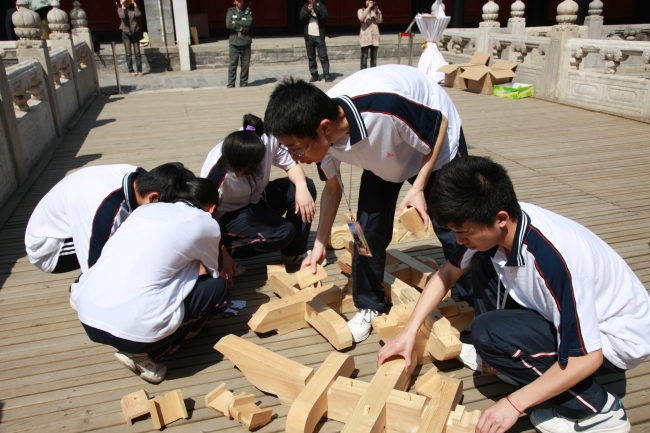 Students participated in heritage site research activities
2) Innovation
The program is close to the study and life of young people. The world heritage education is neither limited to textbooks, nor closed in the campus. The world heritage education program goes out of the school, with the help of professional strength to create a fresh and sustainable world heritage cultural ecology. Over nearly a decade of practice, our program has developed a self-consistent logic system and a variety of activity types. This educational program is not just about memorizing the knowledge of the world heritage, let alone various examinations, but about the activities carefully designed by experts and middle school teachers. Program activities focus on the combination of students’ in-class knowledge, practical activities and teamwork. To use advanced technology to complete the task, so as to acquire knowledge and skills, and cultivate the feelings of the world heritage.
The implementation plan of the World Heritage Education Program for Young People consists of three modules: Sinology, Chinese Art and Protector of Heritage. In the sinology module, there is a plan to design paper art clothing that contains elements of world heritage. The concept of cultural heritage is introduced into the general technology course, so that students can make clothes with paper to reflect the implication of world heritage, and show them through the fashion show. This activity was later initiated by the General Technology Office of the Beijing Basic Education Research Center, the World Heritage Youth Education Center and the Experimental High School Attached to Beijing Normal University to popularize the paper art clothing design activities of students in middle schools in Beijing and even all over China. It has truly realized the integration of tradition and modernity, trained a group of students who love heritage and culture, promoted the curriculum reform of general technology in Beijing, and then radiated to the whole country and played a leading and exemplary role.
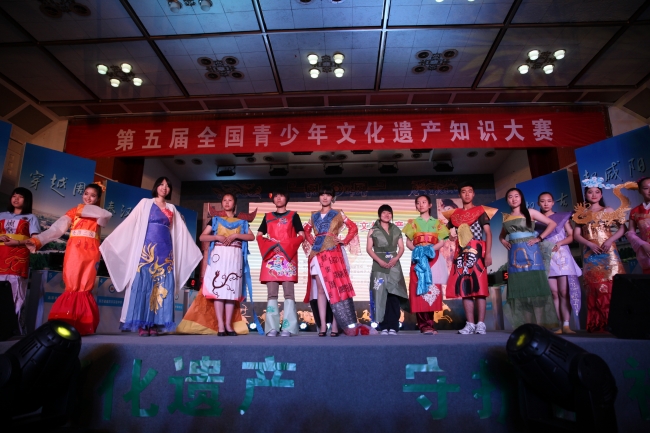 The presentation of paper art clothing that contains elements of world heritage
In addition, there is a theme micro film in the module of heritage protector, which calls on teenagers to show the beauty of world heritage by means of micro film, shows teenagers’ understanding of heritage, and reflects youth’s actions in inheriting culture. This form of micro-film shooting allows the teenagers involved to have emotional interaction with the world heritage. The works are broadcast on major domestic video media such as Tencent Video, Sina Weibo and Youku Video to expand the influence. This mode is very operable and has promotional value.
3) Collaboration
World heritage education breaks educational conventions, integrates relevant social resources, and sets up heritage education work mechanisms:
(1) Leading by UNESCO;
(2) Under the guidance of educational administrative departments;
(3) With the support of relevant heritage protection departments such as the Ministry of Culture, the State Administration of Cultural Heritage, the administrative departments of heritage sites, and relevant NGOs;
(4) The implementation of relevant departments of the school.
Based on the above mechanism, build a benign ecological environment of education that is “compatible with policy requirements, compatible with economic development, integrated with social needs, and mutually promoted with our own growth”. All the factors in the system form a complete whole, exchange material, energy and information with each other, achieve a relatively stable ecological balance, and provide favorable support for the construction of micro education ecological environment. Based on the principle of “service, support, co-construction, sharing and common growth”, the network has established a multi-level dialogue mechanism of “global – regional – school”, as well as a multi-channel, multi-directional and intra-class capacity resource pool, so as to share resource nationwide.
III. Conclusion
In this issue of the presentation of outstanding cases, two case studies from China and the US demonstrate the useful experience of promoting multi-disciplinary integration through cross-boundary innovations and exploring a new model of multi-party cooperation through internal and external combination. These programs not only enable students to learn the knowledge of world heritage and acquire the skills of heritage protection, but also arouse their awareness of the protection of their region, country and world heritage and develop a sense of responsibility to society.
We sincerely wish heritage education practitioners and participants could learn from and get inspired by this presentation of outstanding cases. It would be encouraging to us if the five features summarized above could provide insights to tailor-made innovation practices in the future. The completion of the case collection marked yet another beginning. In the future, we will continue our efforts from here and make endeavors to establish an international network for WHE cooperation and exchange, thus contributing to the innovation of heritage education and the all-around and sustainable development of the heritage sites.
In the next issue, we will present two outstanding cases: “Role of the Intangible Cultural Isututi Dance Heritage in Preserving the Kakamega Natural Rainforest” (Kenya) and “LiangLiang’s World: “Picture Book+” Borderless Heritage Education Concept” (China). We will discover their innovative features in “exploring new heritage education concepts and methods according to local conditions via creativity and technology”.
Contributed by: WHITRAP Working Group
Edited by: He Yixuan, Zhang Yiyang
|
- News | WHITRAP Shanghai and CNR-ISPC bilateral meeting
- News | WHITRAP meets Cité de l’Architecture et du Patrimoine
- WHITRAP Hosting "Workshop on Preliminary Assessment for National Focal Points of the Asia Region" in Chengdu
- WHITRAP Shanghai meets UNESCO
- INTERNATIONAL CONFERENCE PRELIMINARY ANNOUNCEMENT & CALL FOR PAPERS
- Observation of the 46th Session of the World Heritage Committee
Copyright © 2009-2012 World Heritage Institute of Training and Research-Asia and Pacific (shanghai)


